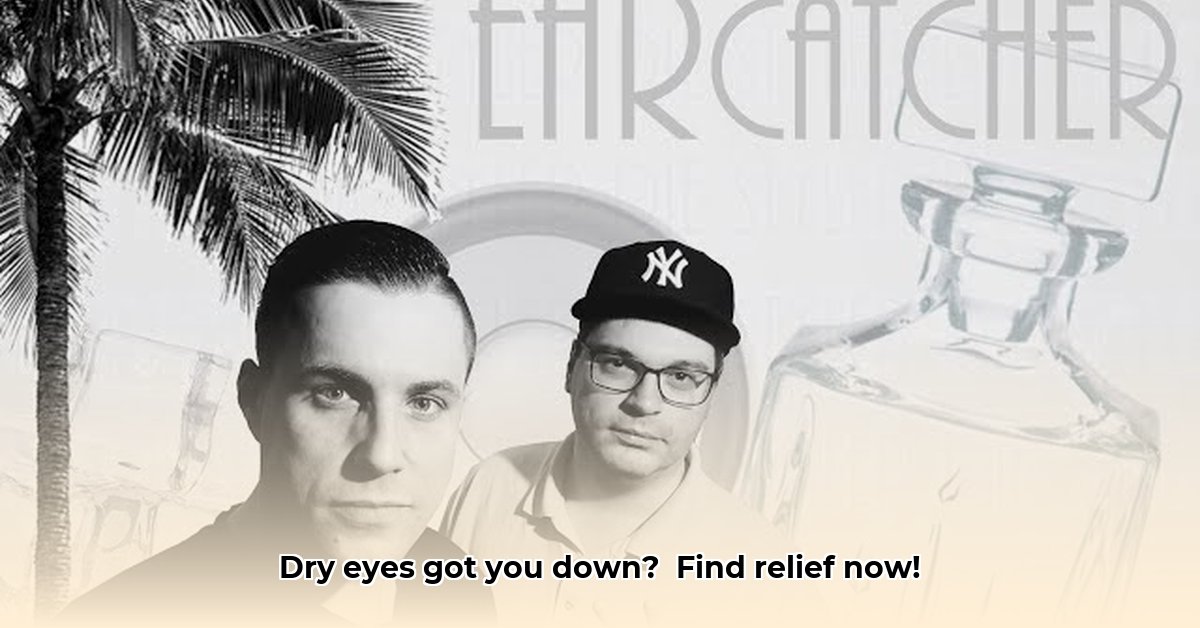
Understanding Atier and Its Mechanism of Action
Atier is an ophthalmic solution designed to alleviate the symptoms of dry eye disease (DED). It contains hydroxypropyl methylcellulose (HPMC), a polymer that acts as an artificial tear, supplementing the natural tear film and lubricating the ocular surface. This added moisture helps soothe dryness and irritation, relieving the characteristic scratchy, gritty sensation often associated with DED. Its mechanism involves coating the eye's surface, extending the tear film's lifespan and preventing excessive evaporation. Atier is also sometimes used as a moisturizing agent during certain ophthalmic procedures.
Atier's Efficacy: A Balanced Perspective
Studies indicate that Atier is effective for many in reducing dry eye symptoms, improving tear film break-up time (TFBUT), a key indicator of DED severity. However, the existing research is relatively limited, thus necessitating larger-scale, longer-term studies to fully establish its long-term efficacy and to provide a robust comparison against other artificial tear products currently on the market. Ongoing research is crucial to refine dosage recommendations and better understand its application across various demographics and DED severities. Are these preliminary results promising? Absolutely. But comprehensive data is still needed to declare definitive superiority.
Patient-Specific Considerations and Personalized Treatment
Atier's effectiveness can vary based on individual factors. Age, overall health status, and the severity of DED all play a role in patient response. While generally well-tolerated, individual experiences can range from significant relief to moderate improvement. This highlights the importance of ongoing research focusing on specific demographic groups. The goal is to provide tailored recommendations for optimal Atier usage and maximize its benefits for all patients. How can we ensure that we tailor Atier's application to get the best results for everyone? More research focused on patient populations is required to answer this.
Atier Formulations: Drops vs. Gel
Atier is available in two formulations: eye drops and a gel. Although both aim to relieve dry eyes, they differ in application, feel, and duration of effect. The gel might offer longer-lasting relief and a more soothing sensation for some, while the drops may be preferred for their ease of use and less lingering feeling. Your ophthalmologist will guide you towards the formulation best suited to your individual needs and preferences. Which form is best for you will likely depend on your preference and the severity of your condition.
Actionable Steps for Different Stakeholders
Here's a practical guide for different groups involved in Atier's use and continued research:
1. Patients: * Short-Term (0-1 year): Discuss Atier with your ophthalmologist and follow their application instructions precisely. * Long-Term (3-5 years): Continue using Atier as instructed, reporting any unusual side effects or lack of improvement to your doctor.
2. Ophthalmologists: * Short-Term (0-1 year): Participate in comparative studies of Atier against other treatments and closely monitor patient responses to refine treatment protocols. * Long-Term (3-5 years): Investigate Atier's potential applications in diverse conditions and consider developing new formulations based on patient feedback and emerging research.
3. Pharmaceutical Companies: * Short-Term (0-1 year): Conduct rigorous clinical trials comparing Atier to competitors and develop targeted marketing strategies based on demographic data showing its effectiveness. * Long-Term (3-5 years): Invest in research and development focused on improving Atier's efficacy, safety profile, and ease of use.
Potential Risks and Cautions
While generally safe, Atier's long-term safety profile requires further investigation. Always consult your ophthalmologist before starting any new eye treatment, including Atier. They will assess your condition, medical history, and other medications you're taking to determine suitability and provide personalized guidance. Open communication with your healthcare provider is crucial for safe and effective use. How effective is Atier in the long term? Further research is required to definitively answer this question.
Dosage and Application: Importance of Proper Technique
Accurate dosage and application are essential for maximizing Atier's benefits and minimizing potential side effects. Your ophthalmologist will provide detailed instructions. If any aspect is unclear, clarify with your doctor to ensure safe and effective use. Applying artificial tears correctly is critical for getting the best results. Does this seem straightforward? It is, but follow your doctor's advice carefully.
The Future of Atier: Ongoing Research and Development
Research into Atier is actively ongoing. Scientists are continuously striving to gather more data on its long-term efficacy, safety, and potential applications beyond dry eye relief. Future developments may result in more precise dosing regimens, enhanced formulations, and potentially even broader applications within the field of ophthalmology. What does the future hold for Atier? Continued research will help answer this.
Comparing Atier to Other Artificial Tears: A Comprehensive Approach
Dry eye disease is complex, requiring treatments that address both objective measures (like tear film break-up time) and subjective patient experience. Artificial tears offer temporary relief, but long-term effectiveness varies widely. Objective measures and patient feedback are essential for effective comparisons. New technologies, like the Ocular Protection Index (OPI), promise improved assessment but wider adoption is needed. How can we consistently compare Atier to other treatments? Standardized testing and reporting are key.